Monday, August 29, 2016
The State as Accomplice: Did Idaho’s “Justice” System Shield a Serial Murderer?

See an important update below.
“Our investigation in the death of Angie Dodge is not over,” insists Idaho Falls Police Chief Mark McBride. “It will never be considered a closed case until after we have identified and brought all involved to justice.”
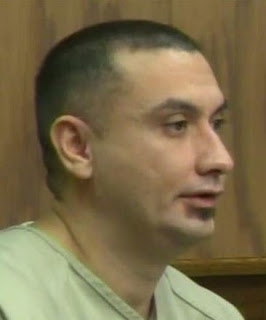 |
| He didn’t do it: Tapp. |
Here’s how they can find him:
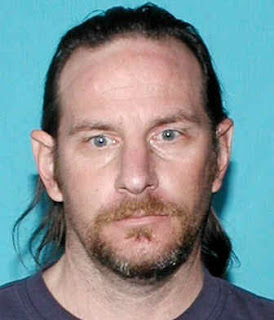 |
| Jeffrey L. Smith |
At the time, he was on probation following a conviction for statutory rape, a fact with some relevance given that Dodge was sexually assaulted before being eviscerated with a knife.

Some of Angie’s friends – Chris Tapp among them – were known drug users. Toxicology tests performed on Angie’s body showed no evidence of drug or alcohol consumption. One IFPD spokesman told the Post Register newspaper that the case was “frustrating because people who might have valuable information about the murder are in the local drug culture and are not likely to speak to police.”
At least one person within that cohort was very willing to speak with the police. Carol Dodge says that she had been told that “a confidential informer working with narcotics agents was part of Tapp’s crowd.”
One very plausible theory is that Jeffrey Smith was that informant. He was a convicted sex offender with a violent history who was clearly being protected by the police in spite of very compelling evidence that he was Angie’s killer. Just a few weeks earlier, as noted previously, he had been given immunity to testify against his younger brother Lanny, who was convicted of murdering Leo and Mary Downard four years earlier.
When the investigation that led to Lanny’s conviction began, Jeffrey was the original suspect. As would later happen in Chris Tapp’s prosecution, the case against Lanny involved no definitive physical evidence connecting the defendant to a hideous crime. The prosecution placed great emphasis on a single tennis shoe print found in the dust in the Downards’ master bedroom. In style and design it matched a pair owned by Lanny – and a nearly identical pair owned by Jeffrey, that was a different size. A computer-manipulated photograph of the dust print – made by Eric Greenwade, an INEL scientist with no experience or credentials as a crime scene investigator — was described as a match for Lanny’s shoes.
A more incriminating piece of physical evidence was found on a pair of jeans owned by Jeffrey – a red spot that initially tested positive as a blood stain. It wasn’t until after the trial that the defense learned that Robert Kerchusky, supervisor of the Idaho Department of Law Enforcement’s latent fingerprint section, a latent fingerprint lifted from the Bushnell scope of the .22 rifle used to kill the Downards matched Jeffrey Smith. When combined with the fact that Jeffrey was the last person seen at the Downard home the day of the murder, there was more than adequate probable cause to indict him for the crime. The charges were dismissed by a magistrate judge in August 1992 – to the audible astonishment of those in the courtroom.
The case was dormant for more than a year and a half before the Bonneville County Sheriff’s Office reopened it – this time focusing on Lanny Smith, rather than Jeffrey. Lanny, who unlike his older brother had no criminal history, is what genteel people would describe as “slow.” He didn’t appear to possess the intellectual skill-set to plan and carry out a murder that would leave practically no useful evidence in its wake. Nor did he have a plausible motive for killing an elderly couple he regarded as friends.
Former BCSO Detective Victor Rodriguez has said that with no compelling evidence to work with, he tried to identify a motive. A local resident named Beverly Huffaker provided him with one that skeptics would regard as lurid gossip: Lanny supposedly nurtured a romantic interest in middle-aged women of ample carriage, and Mary Downard fit that type. On this construction, Lanny slaughtered the Downards after he had been spurned by Mary.
To supplement her speculation regarding Lanny’s alleged fetish, Huffaker told the police that Lanny had admitted to her that he had visited the victims’ home on the day of the murder. She and her son Scott claimed that Lanny had tearfully told them in the early hours of March 22, 1992 that something “something bad had happened” to the Downards. This was taken as a quasi-confession that he had killed the couple. However, that conversation could not have taken place.
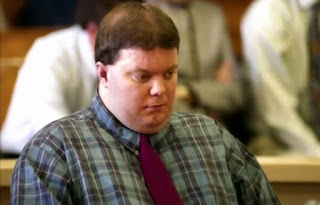 |
| Not a criminal mastermind: Lanny Smith. |
Undaunted, the prosecution produced another witness to whom Lanny had supposedly confessed – a jailhouse snitch named James Swogger.
In the familiar fashion of other offenders seeking to curry favor with the state, Swogger learned about the impending trial of Lanny Smith and told investigators that he would be willing to testify in exchange for considerations. Facing several counts of theft, and one charge of child molestation, Swogger wanted to be relocated to a safer detention facility.
On May 14, 1994, shortly before the trial was scheduled to begin, Swogger wrote a letter to Detective Rodriguez in which he recanted his story that Lanny had confessed to him.
Since they were riding a weak case, the prosecution called Swogger anyway. During a preliminary hearing, Swogger repented of his recantation, insisting that Lanny not only murdered the couple but engaged in a necrophilic assault on Mary’s lifeless body – a claim that was generated by his own depraved imagination and unsupported by physical evidence.
Lanny’s defense counsel introduced another letter Swogger had written to the trial judge in his pending criminal case threatening not to testify unless he received a lenient sentence.
When contacted by investigators for Lanny Smith’s appellate counsel several years ago, Swogger once again denied any knowledge of the murders. In the event that Smith is granted a new trial, both the prosecution and defense should be able to find him with little difficulty: He was convicted on drug and theft charges in Marion County, Oregon last June 22.
Batting cleanup in the prosecution’s underwhelming witness lineup was Jeffrey Smith, who had invoked the Fifth Amendment until he was promised a grant of immunity. His testimony should have been of little use to the prosecution – and it should have been considered a bonanza for the defense.
Jeffrey testified that he had a “fair” reputation in the community – a claim that left him open to extensive impeachment by the defense. Under cross-examination he admitted that five years prior to the murders, he had stolen the .22 rifle eventually used as the murder weapon and attempted to pawn it. He also admitted that he had raped his first ex-wife, and that he had subsequently kidnaped her, taken her to the desert, and threatened to murder her.
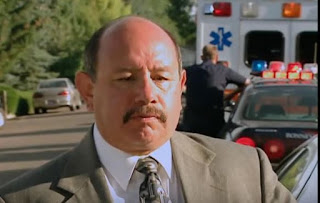
The prosecution also suppressed testimony from Vicky Smith Saver (who is now Vicky Rodriguez), describing how Jeffrey had “threatened to shoot their mother … rape [his sister],” and that he had engaged in “sexually inappropriate” behavior with his sister.”
Shortly after Lanny was convicted, his appellate counsel received a written statement from a woman named Jamie Lynn Hill, who had been a co-worker with one of Jeffrey Smith’s ex-wives. Jeffrey had materialized at the Life Care Center in the company of two underage girls to cadge money from his ex-wife. Eventually the demands escalated to violence. According to Hill, when she intervened, Smith snarled at her: “You better back down, little girl, or I’ll take care of you just like I took care of that old Ammon couple” – which she took as a reference to the Downards.
A report of an incident of spousal abuse between Jeffrey Smith and his ex-wife was filed with the Bonneville Sheriff’s Office on March 18, 1994. At the time of that altercation, Smith was about a week away from a sentencing hearing that would result in an eight-year term of probation. He had legal and court fees to pay and most likely needed money. Understandably horrified by what happened, Hill described the threat to her father, Idaho Falls Police Captain Gary Hagen.
During testimony in Lanny Smith’s post-conviction hearing, Captain Hagen equivocated about the date of his daughter’s disclosure, which he said was tied to a “preliminary hearing.” This was taken as a reference to Lanny Smith’s trial in 1996. What it almost certainly meant, however, was Jeffrey Smith’s sentencing hearing, which happened six days after he had threatened to murder Hill.
The prosecutor was aware of Hill’s statement – and, in keeping with the long-established standards of his loathsome profession, withheld that evidence from the defense.
In a ruling issued last March, US District Judge Edward Lodge insisted that this was not a Brady violation – that is, an offense against due process that would merit a new trial — because “there was no evidence that Gary Hagen was acting on the government’s behalf in the Downard case. As an Idaho Falls police officer, he was not involved in the investigation of the Downards’ homicides in Ammon, which were being investigated by the Bonneville County Sheriff’s Department. More generally, he was acting as Hill’s father rather than a law enforcement official when he advised her to contact the appropriate authorities and stay away from Jeff Smith.”
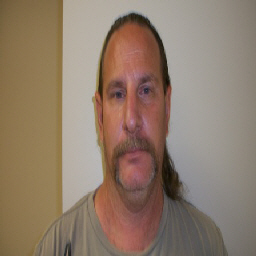
the murders, but whether the prosecution possessed any potentially exculpatory material evidence. Given that the prosecution’s case depended on an eminently disputable footprint identification supplemented by three thoroughly impeachable witnesses – one of whom offered nothing but prurient speculation, another an obvious perjurer, and the third a much better suspect than the defendant – no mystery is involved in explaining why the prosecution didn’t let the defense know about Hill’s testimony.
Why did the criminal “justice” system in Bonneville County protect Jeffrey Lynn Smith during the investigation of the Downard and Angie Dodge murders, and why does the Idaho Attorney General’s Office continue to do so today? The search for an explanation begins with the possibility that he was the local narcotics task force’s rabid little pet, and only gets worse from there.
Assessing the available evidence from the proper perspective – which is to say, that of a cynic who regards all government agencies to be incurably corrupt and incompetent until proven otherwise – it seems clear that if the Bonneville County criminal “justice” system had convicted the offender who actually murdered Leo and Mary Downard, Angie Dodge would probably be alive today.
UPDATE, September 15, 2016
Earlier today I had the privilege of speaking briefly with Judge Michael Heavey (Ret.), founder of Judges for Justice. He told me that a DNA test had been performed on Jeffrey L. Smith and that it apparently excluded him as a donor at the Angie Dodge murder site. This wouldn’t be dispositive under the perverse theory used by the prosecution to obtain the wrongful conviction of Chris Tapp, but for reasonable and honest people it does argue strongly for his innocence in the Dodge murder.
We are still left with Smith’s criminal background as a repeat violent sex offender prone to making murder threats, his bloody appearance a few blocks from the murder scene at or near the time of the crime, and the evidence that Jeffrey Smith, rather than his brother Lanny, murdered the Downards. Judge Heavey is convinced that Angie Dodge was the victim of an impulsive sexual homicide committed by a single opportunistic offender who remains at large because of the IFPD’s perverse determination to convict a manifestly innocent man.
This week’s Freedom Zealot Podcast also discusses the wrongful conviction of Chris Tapp, the profoundly dubious conviction of Lanny Smith, and the Idaho “justice” system’s odd solicitude toward Jeffrey Lynn Smith:
Dum spiro, pugno!
Content retrieved from: http://freedominourtime.blogspot.com/2016/08/the-state-as-accomplice-did-idahos.html.



